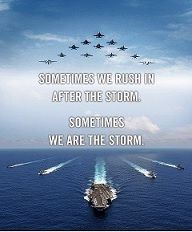A question I hope the resident retired US Navy ranking officer and warship engineering guru will be able to answer.
There is speculation that the explosions that occurred on the Yamatos were caused by some boilers going up. What kind of explosive force is contained within a pressurized naval boiler? My googling has given me this base for TNT:
"The explosive yield of TNT is considered the standard measure for strength of bombs and other explosives with 1 ton of TNT equaling 4.184 gigajoules. So 1 kg of TNT then equals 4.6 megajoules, thus a single gram of TNT is equivalent in energy to one Calorie."
Can the energy stored in a boiler be quantified in a Joules?
I found this article relating to the Japanese 'Kampon' boiler but it's written in some strange code only the warped minds of engineers can read (I'm assuming):
http://www.fischer-tropsch.org/prima...%20S-01-12.pdf
I've seen the world war 2 footage of the US airforce strafing german trains and the resulting boiler explosions and the bang is big but not 'tear apart a battleship big'. I think a steam train's boiler is rated around the 1500hp output where as a Kampon is around the 12500hp but even imagining a 6 x by magnification of the steam train bang I still don't see it being 'tear apart a battleship big' . I'm also not sure whether the concussive force of a boiler explosion would set off cordite etc.
Thanks in advance for any info.
There is speculation that the explosions that occurred on the Yamatos were caused by some boilers going up. What kind of explosive force is contained within a pressurized naval boiler? My googling has given me this base for TNT:
"The explosive yield of TNT is considered the standard measure for strength of bombs and other explosives with 1 ton of TNT equaling 4.184 gigajoules. So 1 kg of TNT then equals 4.6 megajoules, thus a single gram of TNT is equivalent in energy to one Calorie."
Can the energy stored in a boiler be quantified in a Joules?
I found this article relating to the Japanese 'Kampon' boiler but it's written in some strange code only the warped minds of engineers can read (I'm assuming):
http://www.fischer-tropsch.org/prima...%20S-01-12.pdf
I've seen the world war 2 footage of the US airforce strafing german trains and the resulting boiler explosions and the bang is big but not 'tear apart a battleship big'. I think a steam train's boiler is rated around the 1500hp output where as a Kampon is around the 12500hp but even imagining a 6 x by magnification of the steam train bang I still don't see it being 'tear apart a battleship big' . I'm also not sure whether the concussive force of a boiler explosion would set off cordite etc.
Thanks in advance for any info.



Comment